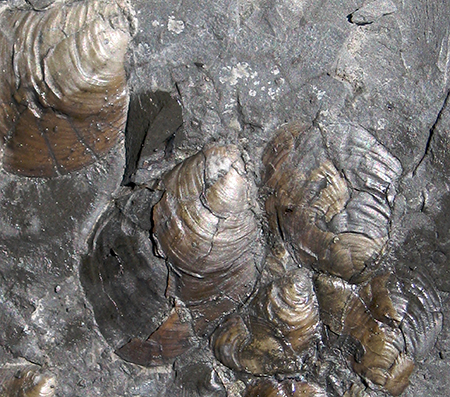 The fossil study found a reduction in the size of the 183-million-year-old-clams as oxygen in the water diminished
The fossil study found a reduction in the size of the 183-million-year-old-clams as oxygen in the water diminished
Data collected by a scientist now at the University of Liverpool has predicted a dramatic decline in the size of marine animals used as food by humans, due to reduced oxygen levels in the oceans.
Dr Bryony Caswell, from the University’s School of Environmental Sciences, in collaboration with Dr Angela Coe at the Open University, studied over 36,000 fossilised clam shells from northern England. These clams date from a short period near the beginning of the Jurassic (183 million years ago) which featured climatic change and declining oxygen levels in the seas, similar to that occurring today.
Ocean dead zones
Over 7% of the world’s oceans are classed as low oxygen zones or ‘ocean dead zones’. This figure has grown dramatically over the last 50 years, caused by increasing levels of pollution and accelerating climate change. Other recently published studies have shown that low oxygen reduces organism size and have predicted that under our current emissions scenario this will to lead to a decrease in the body size of individual marine animals of around 25% by 2050.
 The team studied 36,000 fossils along the North Yorkshire coast
The team studied 36,000 fossils along the North Yorkshire coast
The fossil study, which took place in Whitby, Yorkshire, found a reduction in the size of the 183-million-year-old-clams as oxygen in the water diminished. These changes affected ocean chemistry, which in turn affected the clams’ algal food supply and the rest of the food chain – leading to a decrease in biodiversity and the average body size of clams.
This process has important ramifications for today’s marine life, and for the humans which feed on it. Around 14% of the animal protein consumed today comes from the oceans, and with projections from this study foreseeing a decline of mean shellfish size of up to 50%, it could mean a significant food source for a growing population is now in decline.
 Dr Bryony Caswell: “Our research has shown that if ocean oxygen levels continue to decline it is likely that marine molluscs and possibly other seafloor animals will be smaller and there will be fewer species”
Dr Bryony Caswell: “Our research has shown that if ocean oxygen levels continue to decline it is likely that marine molluscs and possibly other seafloor animals will be smaller and there will be fewer species”
During the early Jurassic period studied by the researchers, many species became extinct. However, some flourished, such as the clam Pseudomytiloides dubius which was small, reached sexual maturity quickly, and reproduced in large numbers. Similar patterns can be observed today, with dramatic growth in the populations of the modern-day coot clam in areas which have low oxygen levels.
Declining oxygen levels
Dr Caswell, said: “By examining changes in the oceans that happened millions of years ago we are able to piece together more of the picture of what is likely to happen in our own time as a result of declining oxygen levels.”
“Unfortunately, our research has shown that if ocean oxygen levels continue to decline, within the next few decades to centuries, it is likely that marine molluscs and possibly other seafloor animals will be smaller and there will be fewer species. This reduction in body-size and biodiversity has profound implications for the animals in our seas and the people who rely on them for food.”
The study was funded by a National Environmental Research Council (NERC) grant to Bryony Caswell at the Open University and was published in the journal Geology.
